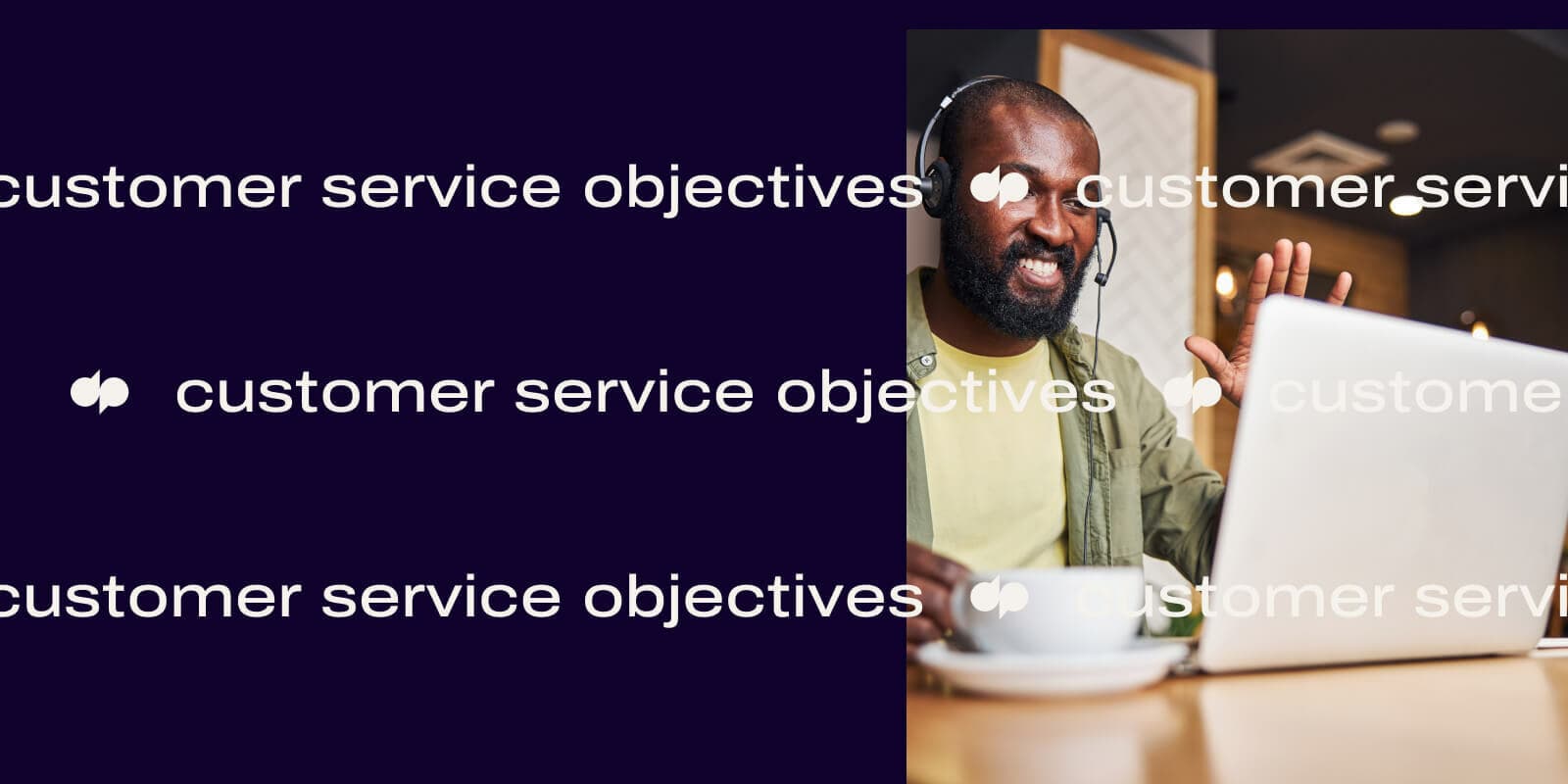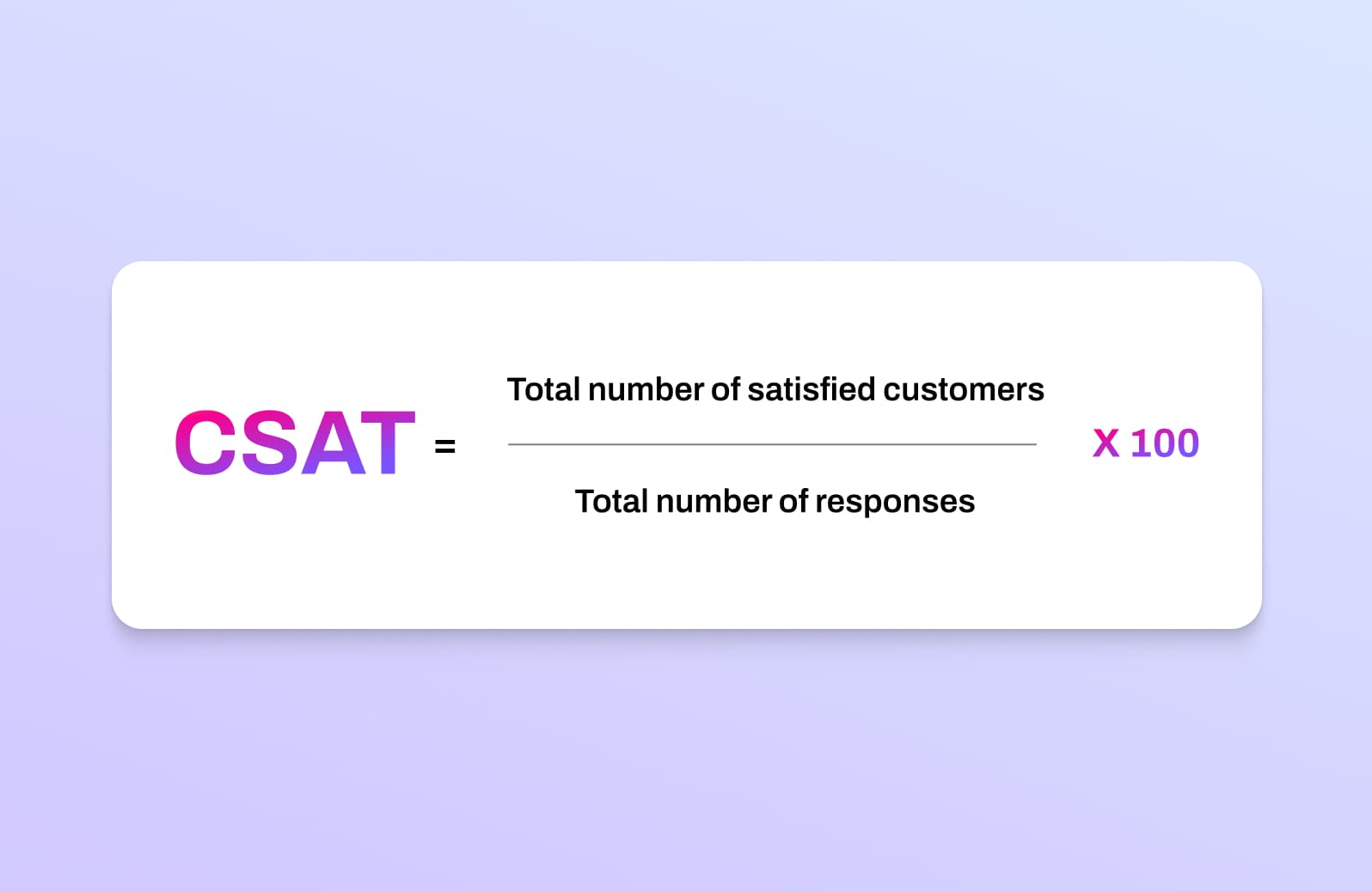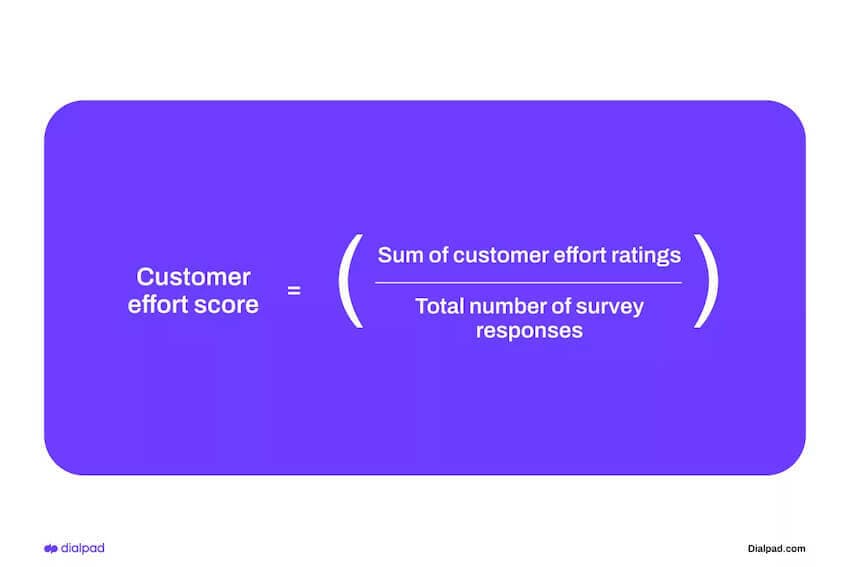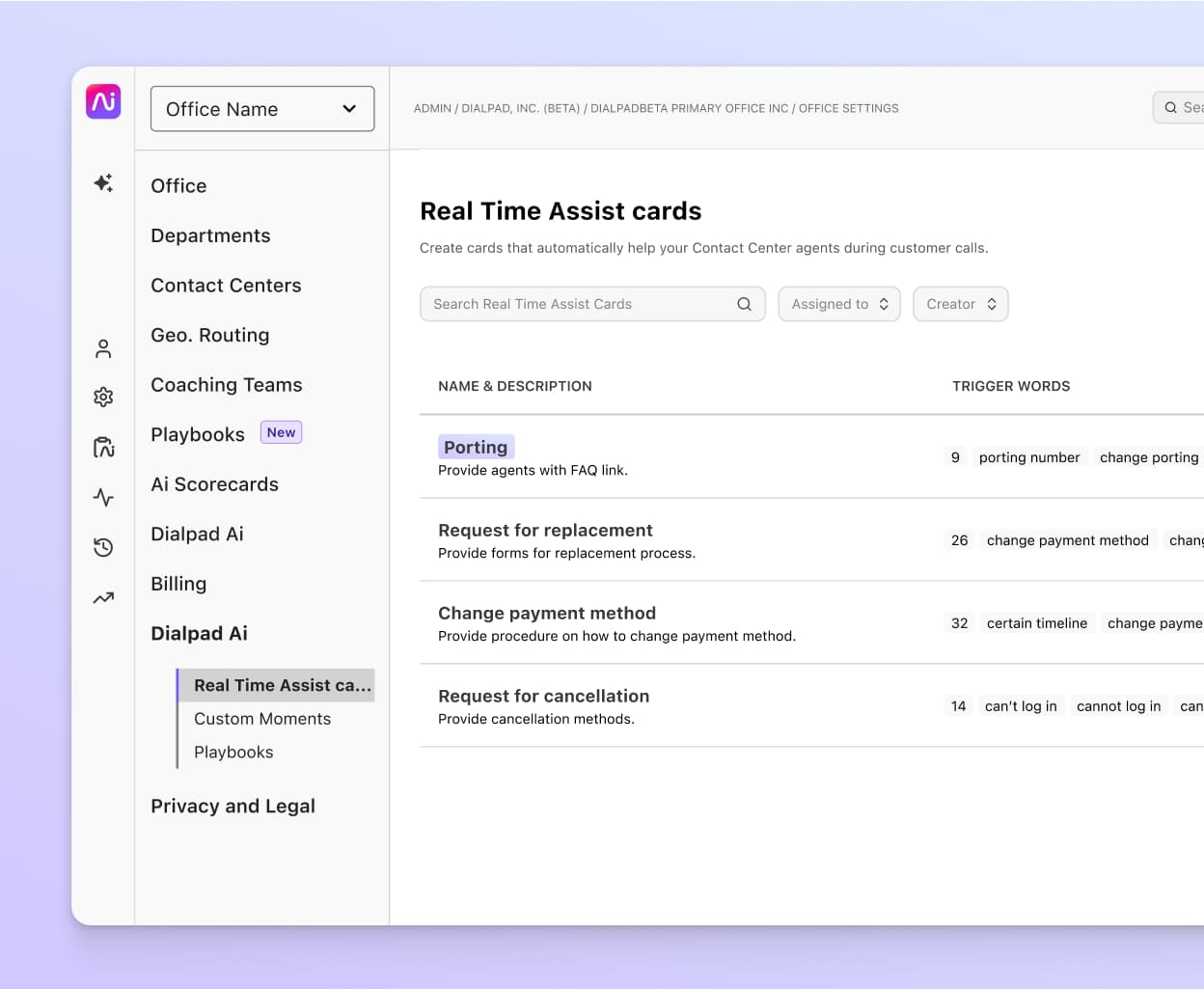Customer service objectives: 8 essential goals that span the customer journey

VP of Customer Experience

Tags
Share
When people talk about “customer service objectives,” they tend to speak of these in terms of generalities (like “the customer is always right” or “don’t just meet their expectations, exceed them”).
Well, if you work in customer experience or customer support, you know that’s not always very helpful. To really build customer loyalty, you have to be much more detailed in your approach and engagement.
But one thing that many customer service teams sometimes neglect is the fact that there are very different objectives for different aspects of customer service. A customer service team can have many objectives, depending on which stage of the customer journey you’re talking about!
For example, a customer that has a question about a faulty product and a customer who’s calling in to tell you how much they loved a new feature may expect very different interactions from you.
And no matter the situation, your job is to make every customer interaction exceptional. It’s a tall order. In my experience, being guided by the right objectives in these different situations is key.
In this post, I’ll show you why, and walk you through some useful objectives and metrics for customer satisfaction that can help you provide good customer service.
What is the ultimate objective of customer service?
Customer service objectives are multi-faceted, but these can be distilled into one fundamental goal: keeping customers happy.
It sounds simple, but the execution of it is a different story. You have to deliver on your promises, resolve problems, and make life as easy as possible for the customer.
Often, you need to remove yourself from your customer service position—and put yourself in the customer’s shoes. What is the kind of experience you’d want? You know what they say: to understand someone, you have to walk a mile in their shoes.
The importance of having customer service objectives
Objectives are essential because they force you to zone in on things you want to achieve (and as a result, give you the motivation to achieve them).
For example, objectives could include specific targets for customer support teams, such as improving average resolution time or customer retention rates. (Or you might decide to improve call quality, like New Zealand-based company solarZero.)
Without the right KPIs and metrics, it’s just not possible to tell if you’re truly providing excellent customer service.
Customer touchpoints to consider: Think in terms of the journey
Touchpoints are all the opportunities that you have to interact with a customer—and there are probably more than you think!
And more importantly, it shouldn’t be the sole responsibility of the customer service department to identify examples of customer pain points or think of ways to improve the experience. (Product, Sales, and Marketing have large roles to play too.)
Pre-purchase
Marketing and advertising
This is your first opportunity to engage prospects, so make sure the content is relevant to your audience. When you understand what customers want, you can deploy targeted marketing and personalisation to make them feel special.
👉 Dialpad tip:
The idea is to encourage people to make contact, so advertising on multiple channels is ideal. You could use a vanity phone number to make your brand easier to remember.
Website
In this day and age, there’s no excuse for a mediocre website. If your website is an important touchpoint for customers (let’s say you’re an ecommerce company), then your site should be modern and user-friendly with fast-loading pages, quality images, and up-to-date content. (That goes for social media, too.)
Help and contact details should be readily available—we’ve all gotten frustrated by trawling through sites that don’t seem to want us to get in touch!
Word-of-mouth
This is such a valuable form of advertising, and it’s free! Basically, you better make sure your customer service is excellent if you want to turn happy customers into brand ambassadors. Getting positive reviews and ratings will help you attract new customers.
At the point of purchase
Product pages and demos
Here’s where you convince potential customers they can’t live without your product by demonstrating its value. Make it clear what it’s for, who it’s for, and why it works.
These pages should contain all the information anybody could possibly want. That means specifications, photos showing the product from all angles, videos of it being used—and reviews from happy buyers. You could add on-screen guides and an FAQ section.
Point-of-Sale
Whether it’s on your website or in a physical store, it has to be efficient and friendly. Point-of-sale is another opportunity for customers to ask about product details, out-of-stock items, or delivery methods. Make sure your agents are ready to provide the answers.
Checkout process
There’s nothing worse than arriving at checkout only to spot a bunch of extra fees. You must be upfront with customers, as unexpected costs are the #1 cause of cart abandonment. If they do abandon, send a subtle follow-up message with an incentive.
👀 Want to provide a better customer experience?
Grab The Contact Centre Playbook, which includes real-life case studies and learnings from five contact centre leaders!
Post-purchase
Billing
You should be upfront about this, too, with no nasty surprises in the form of hidden fees. Billing queries are a common reason for inquiries, so it’s best to keep things simple and consistent. Always inform customers of future price increases, and give them a chance to renegotiate.
Post-sale engagement
Once the customer has agreed to buy whatever you were selling, don’t drop them like a hot muffin. Keep in touch—send a thank-you email or ask how they’re getting on with the purchase. Offer upgrades or exclusive discounts, and figure out the best time to try upselling or cross-selling.
Gathering feedback
Quantitative feedback is critical. As well as spotting areas for improvement, you can use it to build customer profiles and identify trends. Certain customers may be more amenable to certain feedback methods, so offer lots of options such as surveys, questionnaires, emails, or calls.
👉 Dialpad tip:
Dialpad's easy-to-set-up CSAT surveys allow you to capture instant and unfiltered feedback at the end of every call, so you won’t have to worry about calling customers back or sending them emails that’ll inevitably just get lost in their inboxes
Customer service in the customer journey—and the objectives and metrics for each stage
Customers generally pass through five distinct stages in their journey with your company, and there’s a use case for customer service in each of them.
1. Awareness
At this stage, you’re putting the feelers out and making a first impression that (hopefully) will bring customers to your door.
Building brand presence and knowledge with marketing and sales
Smart marketing and sales techniques give customers lots of information about your brand values. It takes time to build loyalty and credibility as a newer company, so it’s super-important that every customer interaction is positive. Get to know your customers and target them with relevant marketing.
Objective: Enhanced customer communication and connection
Your objective here is to forge deep connections and show that you genuinely care about customers' needs. As well as using the right tools, you need to make sure your agents have the right communication skills —even for an entry-level customer service job.
Technical customer service skills can be taught, but empathy and patience cannot. You can get an idea of an applicant’s aptitude from their customer service resumé objective statement and cover letter, but seeing them in action is the best way to judge. Someone might have years of experience but lack key interpersonal skills.
Customer relationships are built on trust. Customers should know your team is there for them, but transparency is also crucial—if there’s a problem at your end, explain what’s happened and what you’re doing to sort it.
👉 Further reading:
See how DTC apparel retailer Tecovas unified its communications platform and CRM to put an end to siloed interactions and grow the business. (Doubling its support staff to 70 agents!)
Metric 1: Organic keyword traffic to your support site
As well as counting the visitors who navigate to self-service support from elsewhere on your site, it’s also good to measure organic keyword traffic (when people use a search engine to find the information). You can see which phrases they use and which articles drive the most traffic.
Metric 2: Engagement with calls to action (CTAs)
Discover how engaged your customers are by placing CTAs around your site and seeing how often prospects use them. These might direct them to articles or products based on what they’re viewing or click-buttons with special offers.
If you track CTAs as part of your website analytics monitoring, you’ll spot where you’re adding value to the customer journey and learn if your strategy needs amending.
2. Consideration
A crucial stage, as the customer decides whether or not to go ahead with a purchase. (They’re probably weighing up your service against that of your rivals.)
Addressing pre-purchase questions
The way your team addresses these questions could make all the difference to the customer service experience. If a prospect can’t find the item they want or needs help at checkout, agents should be patient and remember that not everyone’s tech-savvy!
The customer service team also needs detailed product info at hand—an internal knowledge base is valuable. Use historical data to spot common queries, and include an FAQ section to help customers.
Objective: Boost customer satisfaction
When a customer is satisfied with how you handled their query, they’ll hopefully make the purchase. Yay! But before you get too self-congratulatory, satisfaction doesn’t just depend on your ability to answer a simple question.
It’s about the overall customer experience, so you have to ensure that the service they receive is just as good at every other touchpoint. Proactive problem-solving and anticipating customer needs are critical parts of the job description.
👉 CX tip:
Naturally, the focus falls on unhappy customers—the squeaky wheel gets the grease, after all. But don’t ignore satisfied customers just because they aren’t contacting the support team! Their opinion is just as valuable for your objectives, so reach out and ask for feedback.
Metric 3: Customer satisfaction score (CSAT)
There are different metrics related to customer satisfaction, but CSAT is one of the most commonly used ones and measures customers’ overall satisfaction with the service they received. Customers are asked to rate their satisfaction on a scale of one to five. The results are averaged out to give a score:

Dialpad’s CSAT survey feature comes with email templates and collects automatic customer feedback after phone calls. You can give customers the option of elaborating on their rating and customise surveys with intros, questions, and thank-you messages:

But Dialpad Ai Contact Centre can go a step further—one of the biggest challenges by far with CSAT scores is that not a lot of people actually fill out those surveys.
In fact (depending on the industry and specific business of course), we've found that on average only about 5% of customers actually fill out CSAT surveys. On a related note, usually only the angriest—and happiest—customers actually bother to respond to these surveys, which means your CSAT answers are likely to be very skewed and not representative of how your customers feel overall.
Dialpad's industry-first Ai CSAT feature is designed to solve exactly that. Not only can our Ai transcribe calls and analyse sentiment in real time, it can also infer CSAT scores for 100% of your customer calls thanks to its hyper-accurate transcription feature. The result? A much more representative sample size for CSAT scores, and a more accurate understanding of how satisfied your customers really are:

It opens up a ton of new possibilities for gathering customer intelligence, using a source of data that you already have for free: your everyday customer conversations.
Want to see how Ai CSAT works?
Book a product tour to see the magic—and start getting a more accurate view of your customer satisfaction!
Objective: Prevent future issues
If you can answer their questions fully, customers shouldn’t have to contact you for the same thing again—but do tell them they can get in touch if necessary. You could also offer extra guidance, such as training videos and self-help documentation.
Dialpad’s built-in analytics include visual graphs of how often certain keywords come up in customer calls, so you can identify common queries and increase self-service support.
When a customer alerts you to a pain point, inform the relevant departments (IT, product development) so that they can make changes. Don’t forget to ask for more feedback to ensure the issue has been fixed.
Metric 4: Customer Effort Score (CES)
This metric asks customers how easy it was to interact with the company and have their problems solved. Usually, they provide a rating on a numerical scale, although emoji faces can be used (where would we be without emojis? 😊).
CES measures the perceived effort that the customer had to expend for activities such as registering a product, installing an update, or contacting the support team. Customers are happier when tasks only require low effort.

3. Purchase
During and immediately after purchase, your team must be ready to handle queries and potential complaints.
Providing order and billing support
Customers want to know the status of their order, so it’s crucial to communicate these details—especially if there’s going to be any delay. It’s also worth explaining your billing process at the outset to avoid misunderstandings.
In both cases, customer service professionals need to know what they’re talking about! Having the details at their fingertips will minimise the time spent handling these queries.
Objective: Provide efficient resolution
Nobody likes waiting. You need a system in place to ensure calls are answered quickly and that agents are equipped to resolve issues without passing customers back and forth. Even if a query is complex, customers need to know you’re on the case—and how long it’s likely to take.
Your help desk can use Dialpad tools such as automatic call distribution (ACD) to find the first available agent or smart routing to find the most suitable person for the task. Self-service automations like IVR (interactive voice response) can also reduce wait times.
Dialpad's IVR allows you to let customers know how long they've been on hold and gives them the option to request a call back at a more convenient time.
And if you do have to put someone on hold, at least Dialpad lets you choose the music from a range of tracks (or upload your own).
Metrics 5 and 6: Case (or “ticket”) volume; Average handling time
Average handling time (AHT) is the entire time spent from initial contact to resolution, including hold and follow-up. Ticket volume measures the number of tickets in your support queue over a period of time.
You can reduce AHT and ticket volume through effective training and monitoring, optimised routing, and self-service options. Dialpad’s handy heatmaps highlight problem areas and you can also monitor all your call centres and see real-time information in a central dashboard.
(See how Chicago real-estate business Westward360 approached tracking and measurement of call volumes and hold times to improve its customer service.)
4. Retention
Once you’ve gained a customer, you need to do everything possible to keep them!
Other technical interactions
Customer service representatives are best placed to understand customers’ needs and pain points, and their insights can be used to improve products and services. Agents must be equipped with strong technical knowledge so that they can advise customers with confidence.
As well as training, you can use AI-powered tools to help agents—such as Dialpad’s Real-time Assist (RTA) feature, where pop-up “cheat-sheets” are triggered by keywords or phrases that customers use. Managers can also listen in on calls and “barge” in to help if needed:

Objective: Gather Voice of the Customer (VoC) data; Increase customer lifetime value
VoC or "voice of the customer" describes the process of gathering data on customers’ expectations and preferences. This “voice” offers a real insight into the mind of the customer, and you need to listen to what it’s saying. You can collect data via customer surveys, real-time interactions, and recorded calls. Keeping this information in your CRM software will help you build customer profiles and use the insights to address problems and improve your service to meet their needs. Doing this will boost loyalty and lifetime value (more on that in a sec).
👉Dialpad tip:
Dialpad Ai does a ton of cool things, and one of these is live customer sentiment analysis—using natural language processing and voice recognition, it can show contact centre managers in real time if any calls are going south in case they need to jump in to help an agent. It’s a great way to find out what callers are thinking in real time—and do something about it.
Metric 7: Customer Lifetime Value (CLV)
CLV is the total revenue likely to be generated by one customer during their entire relationship with the company. To get the figure, multiply the average amount they spend on each purchase by the average number of purchases made over their “lifetime” with you.
A high CLV score means they’re spending more with you, and you’re spending less on marketing to them. Upselling and cross-selling opportunities, and referrals, are more likely.
5. Advocacy
The goal is to turn your customers into superfans (but not the crazy kind who might stalk you). Basically, people who love your brand will do the marketing for you.
Continued engagement and follow-ups
Like we said before, you’ve got to keep in touch with customers after the first interaction. Send a follow-up message to check they’re happy with whatever they bought, remind them that they can contact you if necessary—and ask for feedback.
Make sure you remind them about payments and renewals (it’s so easy to forget). Send messages with personalised offers for their birthdays, and ask them to join affiliate and referral schemes.
If they’ve complained about an issue that was your company’s fault, you could make a personal phone call or offer them a discount on your product or service. Agents should develop the leadership skills to decide when this approach is appropriate without having to ask a manager.
Objectives: Growth in customer advocacy; Build customer loyalty
Customers don’t want to feel like you’re only after their money. A great aftersales service will show you care, while personal touches make them feel special. If you go the extra mile, they’ll remain loyal—which is a bonus for you, as the cost of acquiring new customers has grown significantly over recent years and is much higher than retaining existing ones.
If you want to turn customers into brand advocates, your service agents need to be advocates for the customer. They should be willing to do whatever it takes to maintain satisfaction and spark delight by understanding customer expectations.
Metric 8: Net Promoter Score (NPS)
An NPS survey asks customers how likely they are to recommend you to others. Responses are given on a scale of zero to 10 and used to generate a score ranging from -100 to 100.

Customers are divided into three categories: Promoters (those who chose nine or 10), Passives (seven or eight), and Detractors (six or below). Promoters are loyal enthusiasts, Passives are generally satisfied but neutral, and Detractors are likely to share their bad experiences with others.
To calculate NPS, subtract the percentage of detractors from the percentage of promoters. (There’s a lot of math in this post, huh? This is the last calculation, promise.)
The 3 key elements of great customer service
Multiple contact channels for customers
If a customer has to contact you, especially to complain, it’s a hassle for them. The least you can do is give them a choice of contact methods for their convenience, including toll-free numbers (which you can buy from Dialpad).
They might choose a phone call for a complex inquiry or asynchronous communication if they’re multitasking or just don’t like talking to people. (Introverts unite!)
Agents must be confident using all methods, or you could make different team members responsible for different channels.
With Dialpad’s unified solution, you can access all channels in one platform for ease of communication—and all the data is stored in one place, too, so agents won’t waste their time toggling between windows.
Real-time resolution of issues
When a customer makes contact, your aim is to resolve the issue quickly and completely. Real-time resolution means everything’s done and dusted in one interaction, which means agents need easy access to all relevant information.
For technical inquiries, it’s ideal to go through the problem there and then while the customer is in front of whatever’s not working properly. Dialpad’s RTA cards are perfect for this purpose. And if the interaction is threatening to go south, our live coaching feature lets managers step in and rescue things.
(That's just one example of how AI can help improve customer service.)
Post-resolution feedback gathering and consistent improvement
Each interaction should be logged and stored so that it’s easy to spot trends and problem areas. If there are lots of customer complaints or unresolved issues, find out why. Do all negative interactions have something in common? What can you do better?
Recording calls and storing messages gives an overview of the customer’s story, so they don’t have to keep telling you the same thing. You can also use examples of good or bad practices for training purposes.
Customer surveys should be sent out at the optimum time: long enough for them to try out their purchase, but not so long that they forget the experience. Don’t ignore “neutral” scores, as this still means there’s room for improvement.
How to set SMART customer service objectives
The SMART mnemonic is a common framework for defining and evaluating objectives. All goals should be:
Specific
Measurable
Achievable
Relevant
Time-bound
If your objectives aren’t specific, it leads to confusion and frustration. You have to be clear about who’s responsible for what, the resources you’ll need, and the challenges involved. Objectives should also be measurable. Otherwise, it’s impossible to know what you’re aiming for or assess your progress.
The targets have to be achievable—if they’re unrealistic, your team will feel beaten before they begin. It’s important that customer service goals are relevant to overall business objectives. Communication between departments is crucial here.
Finally, you must decide on a timescale for achieving the objectives. You might say that you want to see a reduction in hold time within six months. (But you have to give your agents the tools and training to make it happen!)
Which customer service objectives are you using?
For the most part, there isn't a "magic sauce" for hitting customer service objectives—nor do you need one. As long as you set clear objectives, measure the right metrics, and equip agents to resolve customer issues efficiently, you can deliver great customer service.
Dialpad’s fully unified communications and contact centre platform ensures you can connect seamlessly with customers (and teammates) through voice, video, and messages. We use it ourselves to manage our distributed Support and Customer Experience teams. Get a free demo to see how it works!
Want to provide better customer service?
With Dialpad Ai Contact Center, you have everything you need to meet and exceed your customer service objectives. Book a product tour to see how it can work for your organization!








